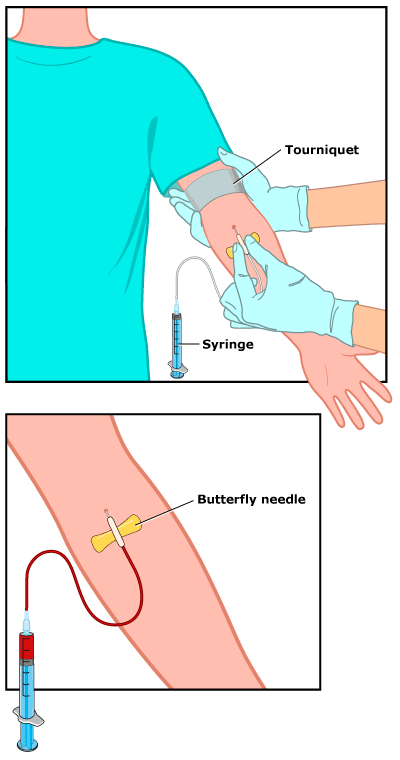Blood Test: Dehydroepiandrosterone-Sulfate (DHEA-S)
Article Translations: (Spanish)
What It Is
Dehydroepiandrosterone-sulfate (DHEA-S) is a steroid hormone produced mainly by the adrenal cortex, the outer part of the two adrenal glands that are located just above the kidneys. Though it's an androgen (a male-type sex hormone), it's produced by both males and females.
DHEA-S serves as a building block for making the male sex hormone testosterone and the female sex hormone estrogen. A DHEA-S test measures the amount of the hormone in the bloodstream.
DHEA-S levels are high in newborn babies, then quickly drop. They rise again during puberty, when they play an important role in triggering the development of pubic and underarm hair.
Why It's Done
Doctors may order a DHEA-S test when they want to check the functioning of the adrenal glands, as in the case of a child who shows signs of DHEA-S overproduction. For both boys and girls, this may mean the appearance of puberty-related characteristics earlier than expected (precocious puberty), particularly the early appearance of pubic or underarm hair.
Significant overproduction or DHEA-S in a girl may result in the development of masculine characteristics such as facial hair, deeper voice, acne, increased muscle mass, and irregular or absence of menstrual periods. An excess of DHEA-S may be caused by congenital adrenal hyperplasia (a condition present from birth in which the adrenal glands make too much androgen and not enough of other steroid hormones) or some other adrenal problems. Low levels of DHEA-S may be present if the adrenal glands are damaged or diseased.
The test may also be used, with other hormone tests, to rule out certain diseases of the testes or ovaries because DHEA-S is also produced (normally in small amounts) by these organs. The test can also help diagnose damage or disease of the pituitary gland because adrenal production of DHEA-S is ultimately controlled by pituitary hormones.
Preparation
No special preparations are needed for this test. In adolescent girls, doctors may request that the test be performed either before or after a menstrual period, as menstruation may affect hormone levels.
On the day of the test, having your child wear a T-shirt or short-sleeved shirt can make things easier for your child and the technician who will be drawing the blood.
The Procedure
A health professional will draw the blood from a vein after cleaning the skin surface with antiseptic and placing an elastic band (tourniquet) around the upper arm to apply pressure and cause the veins to swell with blood. A needle is inserted into a vein (usually in the arm inside of the elbow or on the back of the hand) and blood is withdrawn and collected in a vial or syringe.
After the procedure, the elastic band is removed. Once the blood has been collected, the needle is removed and the area is covered with cotton or a bandage to stop the bleeding. Collecting the blood for the test will only take a few minutes.

What to Expect
Collecting a blood sample is only temporarily uncomfortable and can feel like a quick pinprick. Afterward, there may be some mild bruising, which should go away in a day or so.
Getting the Results
The blood sample will be processed by a machine. The results are commonly available within a few days.
Risks
The DHEA-S test is considered a safe procedure. However, as with many medical tests, some problems can occur with having blood drawn, such as:
- fainting or feeling lightheaded
- hematoma (blood accumulating under the skin causing a lump or bruise)
- pain associated with multiple punctures to locate a vein
Helping Your Child
Having a blood test is relatively painless. Still, many kids are afraid of needles. Explaining the test in terms your child might understand can help ease some of the fear.
Allow your child to ask the technician any questions he or she might have. Tell your child to try to relax and stay still during the procedure, as tensing muscles and moving can make it harder and more painful to draw blood. It also may help if your child looks away when the needle is being inserted into the skin.
If You Have Questions
If you have questions about the DHEA-S test, speak with your doctor. You can also talk to the technician before the procedure.
Note: All information is for educational purposes only. For specific medical advice, diagnoses, and treatment, consult your doctor.
© 1995-2024 KidsHealth ® All rights reserved. Images provided by iStock, Getty Images, Corbis, Veer, Science Photo Library, Science Source Images, Shutterstock, and Clipart.com

